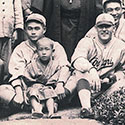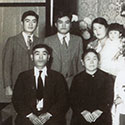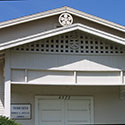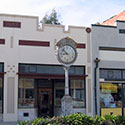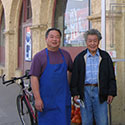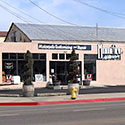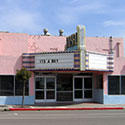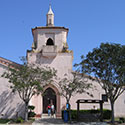 |
GuadalupeLocated nine miles west of Santa Maria on historic Highway 1 in Santa Barbara County is the small town of Guadalupe with a dramatic Nikkei history. Gradually replacing the Chinese in the sugar beet fields, the Japanese labor force grew to nearly 600 with the expansion of the Union Sugar Mill Company of Betteravia in the early 1900s. By the 1910s, a cooperative, renamed the Guadalupe Japanese Association, supporting Japanese farm operations, included branches in Santa Maria, Oceano, Pismo and San Luis Obispo; and the Japantowns of Santa Maria and Guadalupe became commercial centers. While some Japanese ventured out as sharecroppers in the sugar beet fields in 1916, others began to farm other crops because of the decline in the industry. Upon visiting from Los Angeles and noticing the lush valley, Ryoichi Ninokawa began experimenting with lettuce and peas. He soon built a packing operation in Oceano and rented a warehouse in Guadalupe. Although Ninokawa was not experienced in operations, other Japanese farmers followed his lead and farmed vegetables with more success. Due to its mild temperature and westerly winds in the summer, the climate and rich soil proved ideal for produce production. With the Southern Pacific Railroad linking the state, Guadalupe had become the principal agricultural center of North County by the 1930s, providing a majority of the lettuce grown in California. The vitality of Japantown communities in Guadalupe and Santa Maria was reflected in a 1935 report by Hisagoro Sako on the Santa Maria Valley, "There are more than 50 independent farmers tilling over eight thousand acres of land, four packing houses, twelve grocery stores, eleven restaurants, eight hotels and boarding houses . . . The total investment was said to be about two million dollars." After World War II, produce production in Santa Maria continued, while Guadalupe remained, nearly frozen in time, as it was over 60 years ago. ›› CLICK TO ENLARGE.
PROFILES
| ||||

Issei pioneers H.Y. Minami of Minami & Sons and Setsuo Aratani of Guadalupe Produce Co left an indelible mark on the valley. Known as the "Lettuce King", Minami expanded his business in parallel with the valley's growth, starting as a laborer in 1905, as a bookkeeper for Union Sugar Company, and later as a sugar beet sharecropper. By 1917, he was farming 1,200 acres of lettuce; and by 1940 had an annual gross of three million dollars. After operating strawberry farms in Arcadia and Moneta, Setsuo Aratani established a produce company in Los Angeles, primarily supporting Japanese farmers, and supplying them with farm equipment, seeds, and fertilizer. In the 1920s, Aratani leased 500 acres of farmland in the San Fernando Valley; and by 1927, he set up a branch office in Lompoc, overseeing 3,000 acres. Starting Guadalupe Produce Company, Aratani was the first grower to ship lettuce from Guadalupe.
Guadalupe became the town to visit for Japanese migrant workers who followed the crops from north to south, and for dignitaries from Japan who were intrigued by the small, but thriving agricultural town. Baseball enthusiast Setsuo Aratani proudly sponsored a team from the region in 1928 to compete in Japan. His son George Aratani, traveled with the goodwill team; and continued after the war to promote business between the two countries through his highly revered trading companies, Mikasa, and Kenwood Electronics. Both the Minami and Aratani pre-WW II family homes remain in tact - a bungalow style home owned by the Minamis, and a Spanish colonial style home owned by the Aratanis, with arched entryways and stone remnants of a Japanese garden. Photo courtesy of Tets Furukawa of the Guadalupe Buddhist Church.

From the early 1900s, the Masatani family operated a store at Main Street, selling clothing and groceries, with produce stands on the sidewalk to attract the customers, but often tempting the neighborhood children to grab a snack and run. Mr. Masatani also operated three peddler trucks that would carry goods to the labor camps in San Luis Obispo, Santa Maria, Guadalupe, and Lompoc. The historic building still stands today.
Although Mr. Masatani never returned to Guadalupe after WW II, his son Harry continued the family business by opening Masatani Market at its current location on Main Street. Today, third generation Steve Masatani runs the business, while Harry remains the consummate guide for Guadalupe's Japantown history. To retain the old town charm, Harry and his wife purchased the Campodonico building at 9th and Olivero as their home, to prevent it from being moved and to preserve its history that dates back to 1896.

With an interest in providing spiritual and community support for the increasing number of Japanese single men laboring in the fields amidst harsh working conditions and a hostile environment, the Japanese Association sent letters of inquiry to both the Buddhist and Christian churches in San Francisco. With Reverend Izumida arriving first, the Guadalupe Buddhist Church was founded in 1909; and the first church on Main Street was built in 1914. As the establishment of families among Japanese immigrants led to the need for childcare, a dormitory was built in 1919. The dormitory, scrutinized and deemed inadequate for children by the State, was replaced by the two-story Japanese Children's Home of Guadalupe. Reverend and Mrs. Matsuura cared for children who were between the ages of six and fifteen, while their parents worked from dawn until dusk in the fields.
Eternally grateful for the care of his daughters by the Japanese Children's Home, Mr. T. Tanaka generously donated the gilded altar to the temple, as shown in the photo at its dedication in 1933. In 1947 when Reverend Matusuura died, a tall granite monument was erected in his memory and placed in the center of the Japanese section of the well-loved and tended Guadalupe Cemetery. The Guadalupe Buddhist Church, which moved to its current site at 1072 Olivera Street in 1960, proudly celebrates its centennial in 2009. Photo courtesy of Tets Furukawa of the Guadalupe Buddhist Church.

Shimizu Garage, owned by H.Y. Shimizu from 1935, was notable as the largest Chevrolet dealership in Santa Barbara County. Offering a full service garage and service station, and selling cars and auto parts, it occupied nearly a city block on Guadalupe’s Main Street. After the war, the dealership was leased to Finch Chevrolet in 1947; then to Kelsey Chevrolet in 1949; and Guadalupe Auto Center in 1969. Brian Kurokawa purchased the property in 1972 and operates an auto body paint shop today. The Kurokawa family, formerly from Pismo Beach, had opened a fish market, realty business, and liquor store helping to restore the Nikkei business community in Guadalupe during the post war era.

The Fourth North American Tenrikyo Church, pictured with its subtle "mon" or Japanese insignia made from wood in the eaves of the entryway, remains a modest reminder of the pre-World War II era in which it was built. Many Japanese church or temple structures built before 1940 are simple American-style structures with minimal Japanese influence on their exteriors, presumably an attempt to avoid attention during an era of growing anti-Japanese sentiment. Founded in 1919 by Matagoro Sakamoto, the Guadalupe Tenrikyo Church, considered a "new religion" in Japan with ties to the Shinto sect, has served the community for nearly 90 years. The church, built in 1934 with monies raised by over 100 members, continues to provide a gathering place for its long-time members.

Nakano Noodle, specializing in homemade udon noodles with char siu (barbeque pork), occupied the building on the left in the photo that was owned by the Nakano family before and after World War II. In keeping step with the times, Mariko (Marks) Nakano changed the restaurant to Snappy Lunch, a popular local diner, known for its hamburgers, malts, and ice cream sundaes. During World War II, Ray and Louisa Burke operated the restaurant to much success, yet returned it promptly to its owners, as Snappy Lunch became the first Japanese business open to serve the returning internees. Unfortunately, Snappy Lunch was closed in the 1986 even after it was repaired for damages caused by a fire at Hamasaki boarding house next door, when it was unable to pass a building inspection. By the time the inspector rescinded its assessment, the Nakano family had convinced Marks that it was time to retire and Guadalupe lost a favorite eatery.
Next door to Snappy Lunch, the Royal Theater, built in 1939 by Mr. Ishii, was sold prior to World War II. The sudden upheaval of the Japanese American community dramatically affected Guadalupe, with nearly 40% of the business and residences vacated. The Royal Theater continued as a mainstay in the community under the proprietorship of Moe Hernandez, showing Westerns in the 1940s. During the Bracero program in the 1950s, the theater arranged to bring busloads of workers from labor camps to see Filipino or Mexican language films. The City of Guadalupe purchased the theater in the year 2000 to restore it for theatrical and community events.

The Katayama Clock, a Seth Thomas clock installed on the sidewalk in front of the Katayama Jewelry Store in 1923, is symbolic of changing times in Guadalupe. Originally facing north and south, the clock face has been turned 90 degrees and visitors traveling on Main Street are no longer able to view it readily as they drive through town. Standing at over 30-feet, the towering clock was shipped by steamer from New York through the Panama Canal to the Port of San Pedro, then by rail to Guadalupe. On December 8, 1941, after the bombing of Pearl Harbor, the clock was shot at in a public affront to the business' Japanese owners. Anti-Japanese sentiment continued after the war and the clock was targeted several times in the 1950s. Taken by the town's charm upon a visit, Joe and Ruth (Katayama) Honda, decided to resettle in Guadalupe and continue the business. The Katayama name engraved on the clock and the initials HYK etched in the door are reminders of its founder.

In 1930, Guadalupe Joint Union School was built to bring together four elementary schools under one roof. To support efforts for the public school of which 45% of the student body were Japanese American, the Guadalupe Japanese Association appointed nine members to serve on the fundraising committee. The success of the Japanese Association in raising $2,482 for the school within only a few days was prominently noted in the Santa Maria Times, along with their other civic contributions. Today, the Spanish colonial style buildings with "Guadalupe Joint Union School" carved in its arched-entry, is home to the city hall, police station, and fire department.
